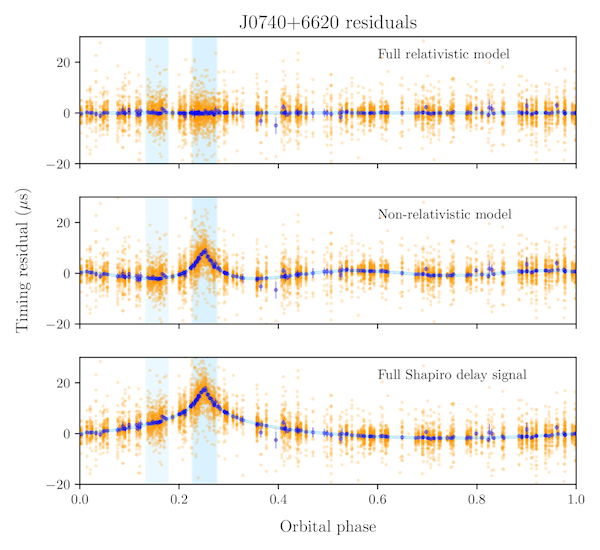Home Page
Recent News

|
Several LAMA and AST faculty and students attended the ASNY (Astronomical Society of New York) Meeting at Skidmore College on October 5, 2019. Kevin Cooke delivered the ASNY Graduate Student Prize talk and five students presented posters. Left to Right: Andy Robinson, Ashley Frank, Kevin Cooke, Jeyhan Kartaltepe, Caitlin Rose, Christina Magagnoli, Dalton Trask, Teresa Symons, and Jessica Chellino. Not pictured: Michael Richmond
|
Latest Publications
A Very Massive Neutron Star: Relativistic Shapiro Delay Measurements of PSR J0740+6620: Cromartie, H. T., et al. (27 authors, including Lam, M. T.), 2019, Nature, 9, 1

|
Measurements of the arrival times of radio pulses from ultra-precise millisecond pulsars allow for extreme tests of fundamental physics. The North American Nanohertz Observatory for Gravitational Waves observed the pulsar J0740+6620 for five years and detected the Shapiro delay, a relativistic effect caused when pulses travel through the curved spacetime of its white dwarf binary companion, most notable when the pulsar appears directly behind the companion. Observation of this effect allows for mass measurements of the mass of the pulsar, allowing us to test different nuclear equations of state in one of the highest-density astrophysical laboratories. We found the mass of the pulsar to be 2.14_{-0.09}^{+0.10} times the mass of the Sun, making it the most massive pulsar known to date, and providing the strongest possible constraints on the existence of exotic types of matter in the cores of these pulsars. The figure shows (top) the good fit of our model used to predict when the pulse arrival times occur, (middle) a bad fit from a nonrelativistic model leaving unmodeled structure behind in the residuals, or the data minus the model, and (bottom) the good fit to our model with a removal of the Shapiro delay signal, showing the excellent consistency with the shape we expect. |

